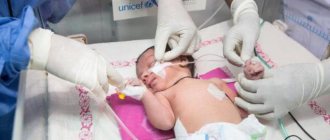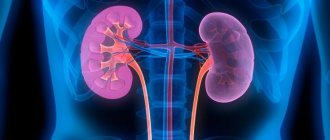Not to be confused with Ichthyosis of the Harlequin type.
| Harlequin syndrome | |
| Other names | Progressive isolated segmental anhidrosis |
| A person with asymmetric symptoms of Harlequin syndrome. One half of the forehead is red and the other half is paler. | |
Harlequin syndrome
a condition characterized by asymmetrical sweating and redness in the upper thoracic region of the chest, neck and face. Harlequin syndrome is considered an injury to the autonomic nervous system (ANS). The ANS controls some of the body's natural processes, such as sweating, redness of the skin, and the student's response to stimuli.[1] Such people with this syndrome do not have hyperemia of the skin from sweat. unilaterally; usually on one side of the face, arms and chest. It is an autonomic disorder that can occur at any age.[2] Harlequin syndrome affects fewer than 200,000 people in the United States.
Symptoms associated with Harlequin syndrome are more likely to appear when a person has been exposed to the following conditions: exercise, a warm environment, and a strong emotional situation. Since one side of the body sweats and flushes according to the condition, the other side will not experience such symptoms.[3] This syndrome is also called "Harlequin sign" and is considered one of a spectrum of diseases that can cause Harlequin syndrome.
It may also result from unilateral endoscopic thoracic sympathectomy (ETS) or endoscopic sympathetic block (ESB) surgery.[2][4]
Harlequin syndrome can also be considered a complication of VA (veno-arterial). extracorporeal membrane oxygenation (ECMO). This is due to differential hypoxemia (low oxygen levels in the blood) of the upper body compared to the lower body.[5]
Signs and symptoms
"Harlequin's sign" is unilateral redness and sweating of the face, neck, and upper chest, usually after exposure to heat or strenuous exercise. [6] Horner's syndrome, another problem related to the sympathetic nervous system, often occurs in combination with harlequin's syndrome. .
Since Harlequin syndrome is associated with dysfunction of the autonomic nervous system, the main symptoms of this dysfunction are: Lack of sweating (anhidrosis) and redness on one side of the face, neck or upper chest. Additionally, other symptoms include cluster headaches, watery eyes, nasal discharge, abnormal pupillary constriction, neck muscle weakness, and drooping of one side of the upper eyelid.[3]
Pathophysiology
Harlequin ichthyosis is accompanied by disturbances of microcirculation and peripheral blood flow due to neurological disorders, which consist of unilateral damage or asymmetry of the functions of the nervous sympathetic system. And, as mentioned above, it is a pathognomonic sign of asphyxia or TBI in newborns.
There is an assumption that the thickening (induration) of the stratum corneum, characteristic of this pathology, develops as a result of a defect in lipid synthesis or dephosphorylation of proteins, resulting in their secretion into the skin and, as a result, the formation of the latter is disrupted.
Causes
One of the possible causes of Harlequin syndrome is damage to the preganglionic or postganglionic cervical sympathetic fibers and parasympathetic neurons of the ciliary ganglion.[7] It is also believed that torsion (twisting) of the thoracic spine can cause obstruction of the anterior radicular artery, leading to Harlequin syndrome.[8] Sympathetic deficit on the denervated side causes the washout of the opposite side to appear more pronounced. It is unclear whether the reaction on the uninjured side was normal or excessive, but it is thought that it may have been the result of the body's attempt to compensate for the injured side and maintain homeostasis.[8]
Since the cause and mechanism of Harlequin syndrome are still unknown, it is impossible to prevent this syndrome.
Mechanism
Although the exact mechanism of Harlequin syndrome is still unclear, it is important to understand what the syndrome affects. Most cases are thought to occur when nerve bundles in the head and neck are damaged. Such ligaments can transmit action potentials from the autonomic nervous system to the rest of the body. However, action potentials in this system are not received by the second or third thoracic vertebrae which innervate the face, neck and upper chest.[3] Lesions or lesions near T2 or T3 may be between the stellate ganglion and the superior cervical ganglion. Here we see a lack of sweat and redness of the skin on one side of the face, neck and upper chest.[ citation needed
]
Therapy
Treatment of this pathology is carried out by a neurologist.
Increased survival is achieved through the administration of systemic retinoids, such as Acitretin and Isotretinoin, but pathological skin changes persist, which adversely affects the quality of life of such patients.
In addition, systemic intensive supportive treatment is carried out to prevent infectious complications, maintain electrolyte-water balance and normal temperature, and ensure normal nutrition of the infant.
In the case of a mild course of the syndrome, parents are advised to maintain the air temperature at 20 degrees and train the child’s autonomic system and blood vessels, that is, the child’s gradual adaptation to cold and heat.
Diagnostics
The diagnosis of Harlequin syndrome is made when a person has persistent signs and symptoms of the condition, so it is made based on clinical observation. In addition, a neurologist or primary care physician may need an MRI test to rule out conditions such as Horner's syndrome, Ady's syndrome, and Ross's syndrome.[3] During an MRI, a radiologist can observe areas near the brain or spinal cord for damage or any damage to nerve endings. It is also important for the physician to rule out traumatic causes by performing autonomic function tests.[9] Such tests include the following: tilt table test, orthostatic blood pressure measurement, head-up test, valsalva maneuver, thermoregulatory sweat test, tendon reflex test, and electrocardiography (ECG). Scans of the heart and lungs may also be performed to rule out a structural underlying lesion.[10] The person's medical history should be carefully recorded.
Skin manifestations
If we use medical terms to describe the disease, then Harlequin syndrome manifests itself as compact keratinization of the skin. There is no so-called granular layer on it; instead, plaques are visible that form when the epidermis cracks. These formations are hexagonal in shape and are often separated by deep red cracks. The skin color is gray or jaundiced.
Children born with this syndrome often have other abnormalities: they may have a deformed mouth (resembling fish lips), eversion of the eyelids, improperly developed, too flat ears. In some cases, microcephaly is diagnosed when the baby's skull is underdeveloped: as a result, he is born with a very small brain. Such children die in the neonatal period or upon birth.
Treatment and prognosis
Harlequin syndrome is not debilitating, so treatment is usually not required.[6] In cases where a person may feel awkward in public, a contralateral sympathectomy may be considered, although compensatory redness and sweating of other parts of the body may occur.[10] With contralateral sympathectomy, nerve bundles are ruptured, causing facial redness. As a result of this procedure, both sides of the face are no longer red or sweaty. Because the symptoms of Harlequin syndrome do not usually impair a person's daily life, this treatment is recommended only if the person is very uncomfortable with the hot flashes and sweating associated with the syndrome.[3]
Harlequin syndrome in a newborn
Doctors discover the problem immediately after the baby is born. According to them, Harlequin syndrome can be explained by imperfect development of the autonomic system, which ceases to control the correct vascular tone. The disease can also be triggered by simple gravity. Why is this happening? Doctors cannot give a definite answer to this exciting question. The range of reasons is very wide: from a simple failure in the development of the fetus to the wrong lifestyle led by a pregnant woman.
The syndrome can manifest itself throughout the body or only in certain areas of the body. Such babies, doctors say, will constantly suffer from colds, since their thermoregulation is impaired. At any time of the year, the little one will sweat profusely, then suddenly become hypothermic, as a result of which he is guaranteed constant viral infections. In addition, the syndrome causes a lot of discomfort, so the child often cries, he is restless and irritable.
Study
In August 2021, researchers from the Instituto de Assistência dos Servidores do Estado do Rio de Janeiro used botulinum toxin as a method of blocking acetylcholine release from presynaptic neurons. Although they noticed a decrease in unilateral redness, sweating still occurred.[11]
Case studies have been conducted of people who experienced this syndrome after surgery. Two patients with metastatic cancer, aged 37 and 58 years, were prescribed an intrathecal pump drug delivery system. After insertion of the intrathecal pump, patients were administered certain medications. After taking the medications, both patients experienced unilateral facial flushing, closely resembling Harlequin syndrome.[12] Patients underwent a neurological examination to confirm that their nerves were still intact. The MRI showed no significant evidence of bleeding or nerve compression. After close observation for 16 hours, the symptoms of Harlequin syndrome decreased and both patients did not have another episode.
Another case study was based on a 6-year-old man who visited an outpatient clinic for unilateral hot flashes during or after physical activity or heat exposure.[9] Vital signs, laboratory tests, and CT scans were normal. Along with the hot flashes, the right pupil size was 1.5 mm, and the left pupil size was 2.5 mm; however, no ptosis, miosis, or enophthalmos has been noted.[9] The patient also underwent an MRI to rule out any lesions near the brain or spinal cord. No abnormalities were noted and the patient did not receive any treatment. The patient is diagnosed with idiopathic Harlequin syndrome.
Although the mechanism is still unclear, the pathophysiology of this condition, careful monitoring and reassurance are vital factors for successful treatment.
Recommendations
- NIH - National Cancer Institute. "Autonomic nervous system". PubMed Health
. - ^ a b c
Lance, J. W. (2005).
"Harlequin Syndrome". Practical Neurology
.
5
(3): 176–177. Doi:10.1111/j.1474-7766.2005.00306.x. - ^ a b c d f
“Harlequin Syndrome |
Genetic and Rare Diseases Clearinghouse (GARD) - NCATS Program.” rarediseases.info.nih.gov
. Retrieved 2017-11-07. - Wasner, G.; Maag, R.; Ludwig, J.; Binder, A.; Schattschneider, J.; Stingele, R.; Baron, R. (2005). “Harlequin syndrome is one face of many etiologies.” Nature Clinical Practice Neurology
.
1
(1):54–59. Doi:10.1038/ncpneuro0040. PMID 16932492. S2CID 5324849. - Al-Khanshi, Saeed Ali Masood; Osmani, Farhana Al (2017). "Case Study of Harlequin Syndrome in VA-ECMO". Qatar Medical Journal
.
2017
(1): 39. doi:10.5339/qmj.2017.swacelso.39. PMC 5474607. - ^ a b
National Institutes of Health: Office of Rare Disease Research. (2009) "Harlequin Syndrome". Genetic and Rare Diseases Clearinghouse (GARD). https://rarediseases.info.nih.gov/GARD/Condition/8610/QnA/22289/Harlequin_syndrome.aspx. December 9, 2011 - Corbett M, Abernethy DA; Abernethy (1999). "Harlequin Syndrome". J Neurol Neurosurg Psychiatry
.
66
(4): 544. doi:10.1136/jnnp.66.4.544. PMC 1736279. PMID 10201435. - ^ a b
Lance, J. W.; Drummond, P.D.; Gandevia, S.C.; Morris, J. G. L. (1988) "Harlequin syndrome: sudden onset of unilateral flushing and sweating." Journal of Neurology, Neurosurgery and Psychiatry (51): 635-642. - ^ a b c
Kim, Ju Young;
Lee, Moon Suk; Kim, Seung Young; Kim, Hyun Jong; Lee, Soo Jin; You, Chur Wu; Kim, John Soo; Kang, Joo Hyun (November 2021). "A pediatric case of idiopathic Harlequin syndrome." Korean Journal of Pediatrics
.
59
(Appendix 1): S125–S128. Doi:10.3345/kjp.2016.59.11.S125. ISSN 1738-1061. PMC 5177694. PMID 28018464. - ^ a b
Willaert, W.I. M.;
Scheltinga, M. R. M.; Steenhuisen, S. F.; Gil, J. A. P. (September 2009). "Harlequin syndrome: two new cases and a management proposal." Acta Neurologica Belgica
.
109
(3):214–220. ISSN 0300-9009. PMID 19902816. - Manhães, Roberta KJV.; Spitz, Maryana; Vasconcellos, Luis Felipe (2016). "Botulinum toxin for the treatment of Harlequin syndrome." Parkinsonism and related disorders
.
23
: 112–113. doi:10.1016/j.parkreldis.2015.11.030. PMID 26750113. - Zinbunyahgun, Nantthasorn (June 2015). "Harlequin syndrome after implantation of intrathecal pumps: a case series." Neuromodulation
.
18
(8):772–5. Doi:10.1111/ner.12343. PMID 26399375.











